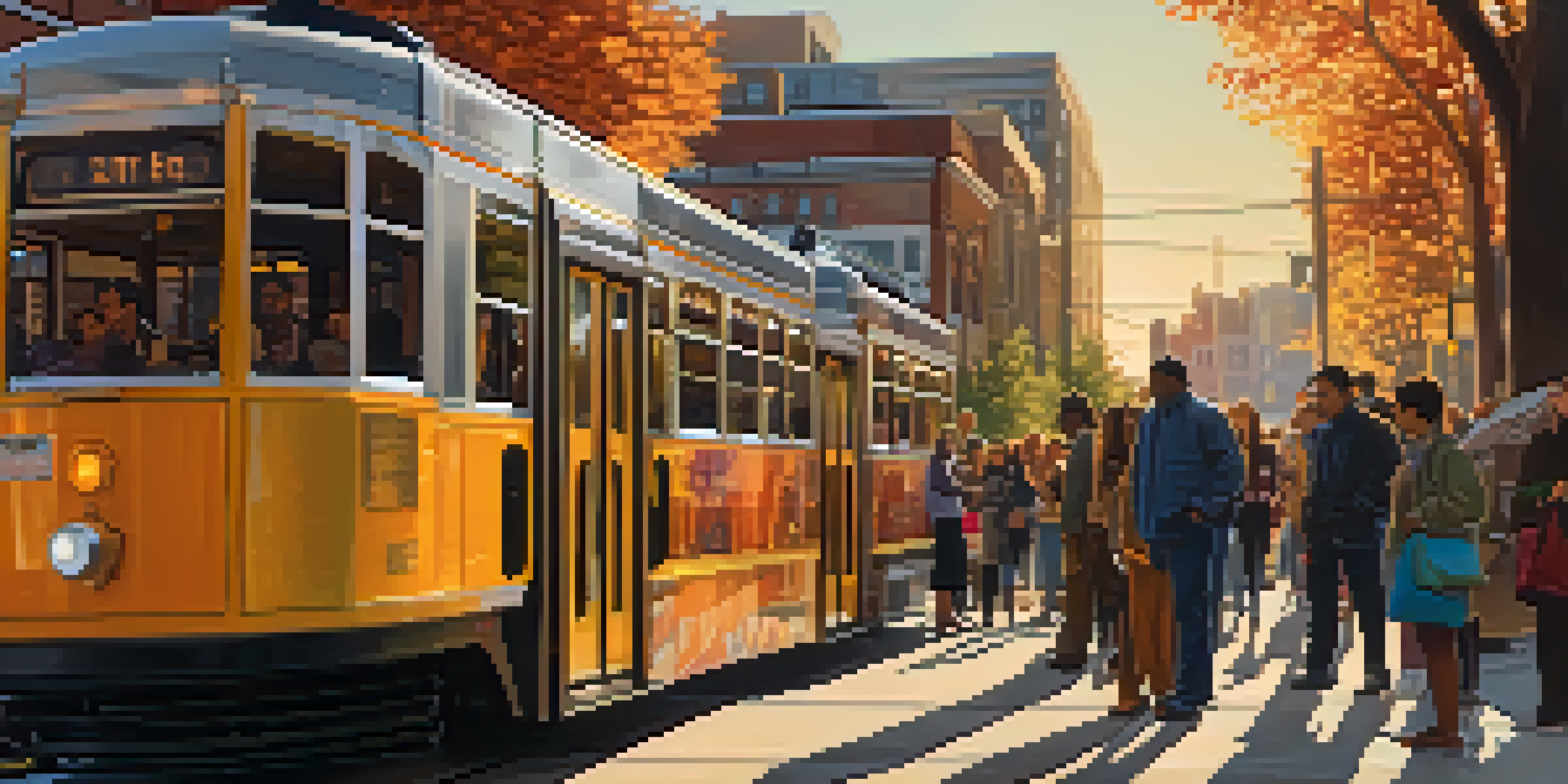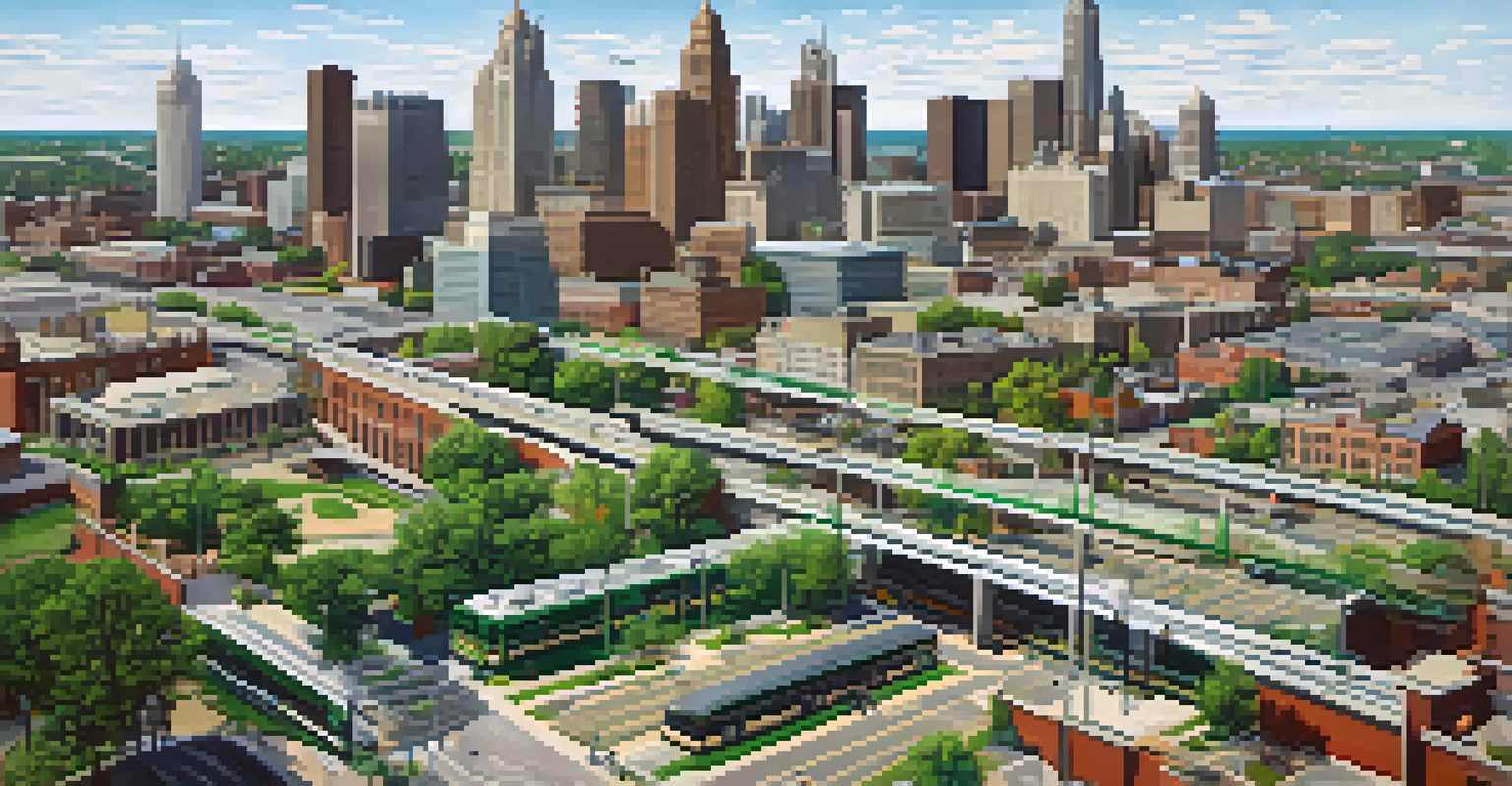The Role of Public Transit in Detroit's Infrastructure Future

The Current State of Public Transit in Detroit
Detroit's public transit system has faced significant challenges over the years. Once known for its extensive bus network, the system has struggled with funding and service reliability. Many residents rely on public transit to commute, but limited routes and infrequent schedules can make it a frustrating experience.
Public transit is the lifeline of our cities. It connects people to jobs, education, and opportunity.
In recent years, there have been efforts to revitalize the transit system, including the introduction of the QLine streetcar. This revitalization is crucial not just for daily commuters but also for attracting businesses and tourism to the area. Understanding the current state of public transit is essential to envisioning its future role in Detroit's infrastructure.
By assessing the present challenges and opportunities, we can better appreciate how public transit can be a catalyst for change in the city. A robust public transit system can improve accessibility, reduce traffic congestion, and enhance the quality of life for all residents.
Public Transit as a Catalyst for Economic Growth
Public transit is more than just a means of getting from point A to point B; it plays a vital role in economic development. When people can easily access jobs, education, and services, they are more likely to contribute to the local economy. In Detroit, improving public transit could lead to increased job opportunities and a boost in local businesses.

For instance, cities with well-connected transit systems often see higher property values and increased investment. The presence of reliable public transportation can make neighborhoods more attractive to new residents and businesses alike. This direct link between transit and economic growth underscores the importance of investing in Detroit's infrastructure.
Revitalizing Detroit's Transit System
Efforts to improve public transit are essential for enhancing accessibility, boosting economic growth, and attracting investment in Detroit.
Moreover, as Detroit continues to recover and rebuild, a strong public transit system can help bridge economic gaps and foster inclusivity. By ensuring that all residents have access to essential services, the city can work towards a more equitable future.
Environmental Benefits of Public Transit Expansion
One of the most compelling reasons to invest in public transit is its positive impact on the environment. Fewer cars on the road mean reduced greenhouse gas emissions, which is crucial for combating climate change. In Detroit, expanding public transit can significantly decrease the city's carbon footprint.
Transportation is the backbone of economic development and social equity.
Public transit systems, especially when combined with green technologies, can promote sustainable urban development. For example, electric buses and energy-efficient streetcars can help create cleaner air and a healthier environment. This shift towards greener transportation aligns with global efforts to create more sustainable cities.
By prioritizing public transit, Detroit can set an example for other cities facing similar environmental challenges. A commitment to sustainability through transit can lead to a healthier city, benefiting both residents and the planet.
Enhancing Connectivity Through Technology
Technology is reshaping the way we think about public transit, and Detroit is no exception. With the rise of mobile apps and real-time tracking, riders can now plan their journeys more effectively. This technological integration enhances the overall user experience and encourages more people to choose public transit over private vehicles.
Innovations such as contactless payments and digital route maps make it easier for commuters to navigate the system. Additionally, data analytics can help transit authorities make informed decisions about service improvements and expansions. This tech-savvy approach not only streamlines operations but also builds trust among users.
Public Transit and Social Equity
Investing in public transit can help ensure equal access to jobs and services for all residents, promoting social equity in the city.
As Detroit embraces these technological advancements, it can create a more connected and efficient transit system. The future of public transit in the city will likely be shaped by how well it adapts to these changes and meets the needs of its riders.
The Importance of Community Involvement
Engaging the community in transit planning is vital for creating a system that truly meets the needs of its users. Public input can provide valuable insights into the preferences and priorities of residents. Community involvement ensures that transit developments reflect the diverse needs of Detroit's population.
Workshops, surveys, and public forums can facilitate meaningful dialogue between transit authorities and the community. This collaborative approach fosters a sense of ownership among residents and encourages them to advocate for effective public transit solutions. When people feel heard, they are more likely to use and support the system.
By prioritizing community engagement, Detroit can build a public transit system that not only serves but also inspires its citizens. A well-supported transit system can become a source of pride and a reflection of the city's commitment to its residents.
Public Transit and Social Equity
Public transit is a critical component of social equity in urban environments. Many low-income residents rely on public transportation to access jobs, healthcare, and education. By improving transit options, Detroit can help level the playing field and ensure that all residents have equal access to opportunities.
Equitable transit systems can reduce barriers faced by marginalized communities, allowing for greater social mobility. When individuals can easily reach their destinations, they are better positioned to succeed. This connection between transit and social equity highlights the importance of prioritizing inclusivity in planning efforts.
Future Vision for Comprehensive Transit
A well-planned transit network in Detroit can enhance connectivity and livability while supporting sustainable urban development.
Investing in public transit is not just an infrastructure issue; it's a matter of social justice. By addressing these disparities, Detroit can foster a more inclusive environment where everyone has the chance to thrive.
The Future Vision: A Comprehensive Transit Network
Looking ahead, Detroit has the opportunity to develop a comprehensive public transit network that connects neighborhoods, supports economic growth, and promotes sustainability. A well-planned transit system would include various modes of transportation, such as buses, streetcars, and bike lanes, to ensure seamless connectivity.
Such a network would not only improve daily commutes but also enhance the overall livability of the city. By prioritizing public transit in its infrastructure plans, Detroit can create a vibrant urban landscape that attracts residents and businesses alike. This vision for the future is one where mobility and accessibility are at the forefront.

Ultimately, the success of this vision relies on collaboration between government, community members, and transit advocates. Together, they can build a public transit system that not only meets current needs but also anticipates future challenges and opportunities.